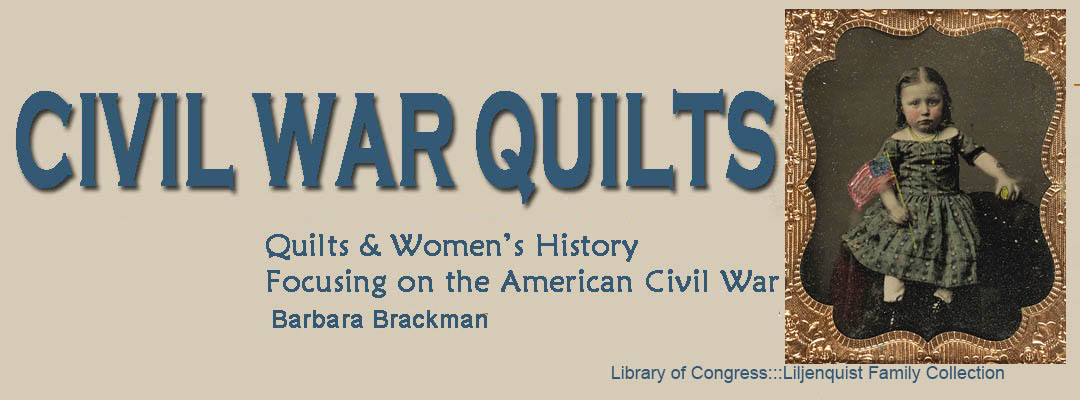Becky Collis
Central wreath for Baltimore Belles & Rebels
Baltimore's Brown Veil Club, also known as the
Monument Street Girls, sewed for the Confederacy.
Women in Civil War Baltimore held conflicting loyalties despite Maryland's position as a Union state. Many slaveholders in the city hoped vainly for secession. Others considered themselves so Southern there was little question as to which side deserved their support.
Yet the city's women included Union-sympathizers among its social leaders and those of lesser status such as free Blacks in that city with the country's largest such population.
Baltimore Belles & Rebels will tell stories over the year of the city's women with patterns in the traditional Baltimore manner popular in the late 1840s and '50s. Our proposed sampler quilt has a medallion set with a large center wreath. You can get started on that now so here is the pattern for the 13th block, a 24" finished center and a 6" finished frame around the wreath.
12 monthly blocks finishing to 18"
with a center block finishing to 24"
in a frame finishing to 36"
No border
Print this on an 8-1/2" x 11" sheet of paper.
Colonial Williamsburg
Sarah Anne Whittington Lankford 1830-1898
The setting inspiration is the Lankford quilt in the collection of Colonial Williamsburg (photo modified above to be square with 12 blocks.)
Some monthly applique designs will be similar to Sarah's---not the same.
See a post on more Baltimore Albums with a central focus here:
Fabric: Becky Collis is planning traditional reds and greens for her version so you might want to do likewise and look through your stash for reproductions suitable for a ca. 1860 applique. As in most Baltimore albums the prints and plains are scrappy. For a consistent background in the blocks, center & border buy 7 yards of one fabric. Over the year we'll give ideas for borders and I am sure you readers will come up with some on your own.






















.jpg)





























